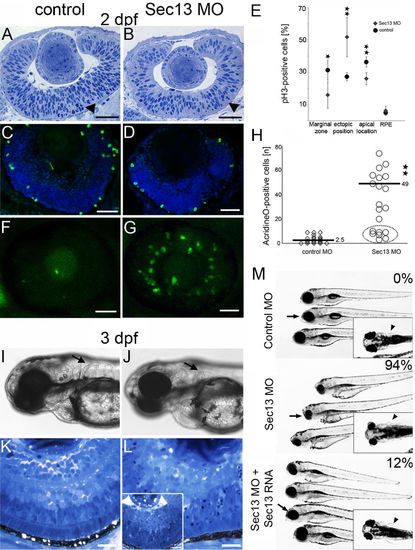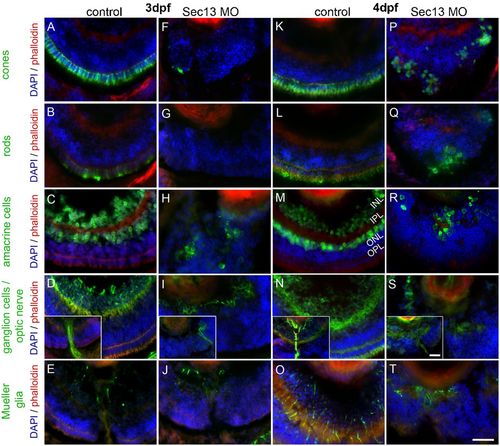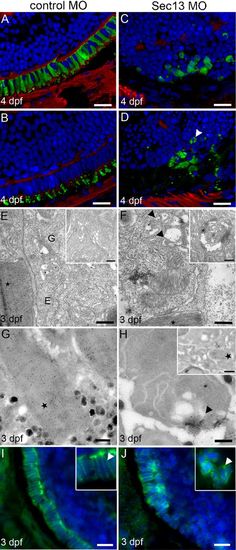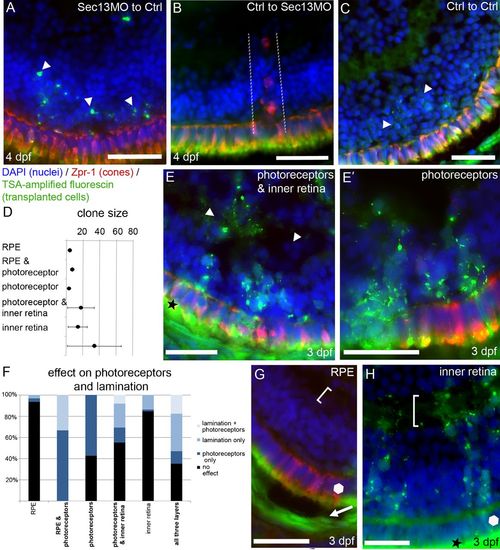- Title
-
Early stages of retinal development depend on Sec13 function
- Authors
- Schmidt, K., Cavodeassi, F., Feng, Y., and Stephens, D.J.
- Source
- Full text @ Biol. Open
|
Sec13 morphant phenotype. PHENOTYPE:
|
|
Rescue of Sec13 knock-down phenotype. PHENOTYPE:
|
|
Cellular identities in embryonic Sec13 knock-down eyes (A-T) EXPRESSION / LABELING:
PHENOTYPE:
|
|
Photoreceptor development and opsin transport in Sec13 morphant eyes. PHENOTYPE:
|
|
Basal lamina/Bruch′s membrane in Sec13 knock-down embryos. |
|
Cell autonomous effect of Sec13 depletion. |






